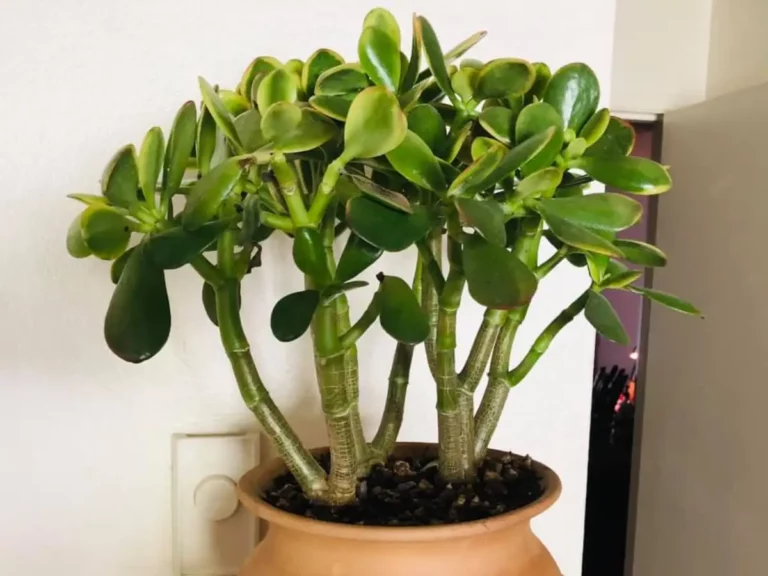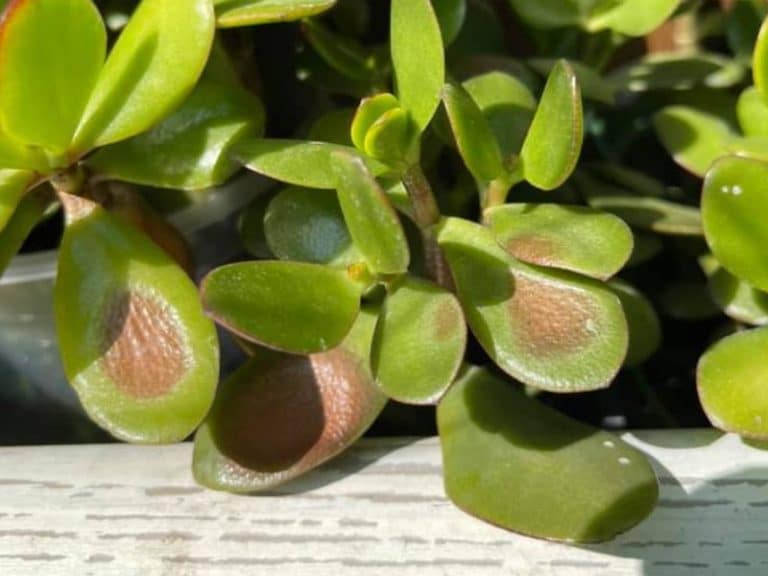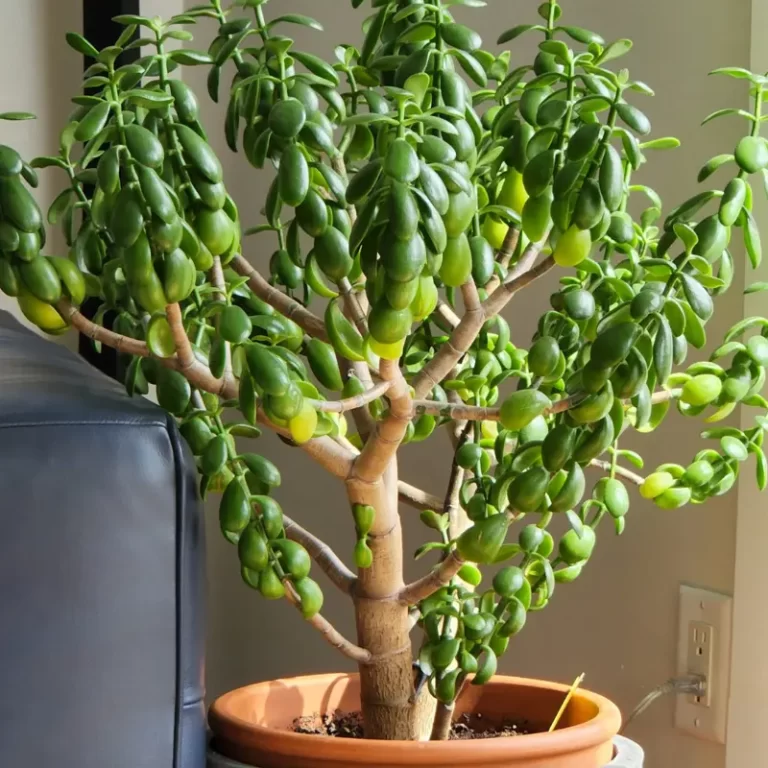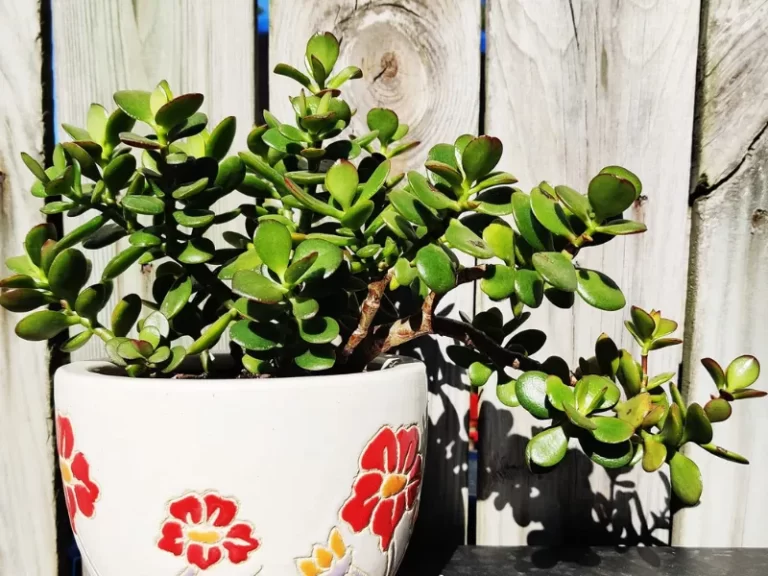How to Get Rid of White Spots on Jade Plant
Jade plants are known for their succulent green leaves, but once in a while, you’ll find white specks forming on the foliage and stems of the plant. What causes these white marks and how do you get rid of them?
White spots on jade plants are caused by salty water, powdery mildew, overwatering, and fungi. To get rid of these spots, especially those caused by powdery mildew, make a weak solution of baking soda and vinegar and spray it evenly on the plant to kill the spores.
You can also remove the affected foliage and clean the plant with soft water to remove the visible white fuzzy spots mold.
While the white spots can be harmless, they ruin the jade plant’s beauty. Worse still, they can affect the plant’s growth rate and even the blooming cycle of jades.

Why does my jade plant have white dots?
White spots on your jade plant might be caused by environmental conditions, poor maintenance practices, or external factors such as fungus and insects. Each cause has a different curative approach.
Here are the causes of white dots on your jade plant:
| Problem | Treatment |
| Overwatering | Water the jade plant sparingly and fix drainage problems. Cut off watering during winter. |
| Powdery mildew | Use 50%-70% isopropyl alcohol. Treat the plant with a systemic fungicide. |
| Fungi | Treat the plant with a fungicide. Improve the humidity and watering. |
| Insect infestation | Use isopropyl alcohol, insecticidal soaps, and neem oil. |
| Use of salty water. | Use filtered or rainwater. |
JADE PLANT: BEST TIPS + TRICKS
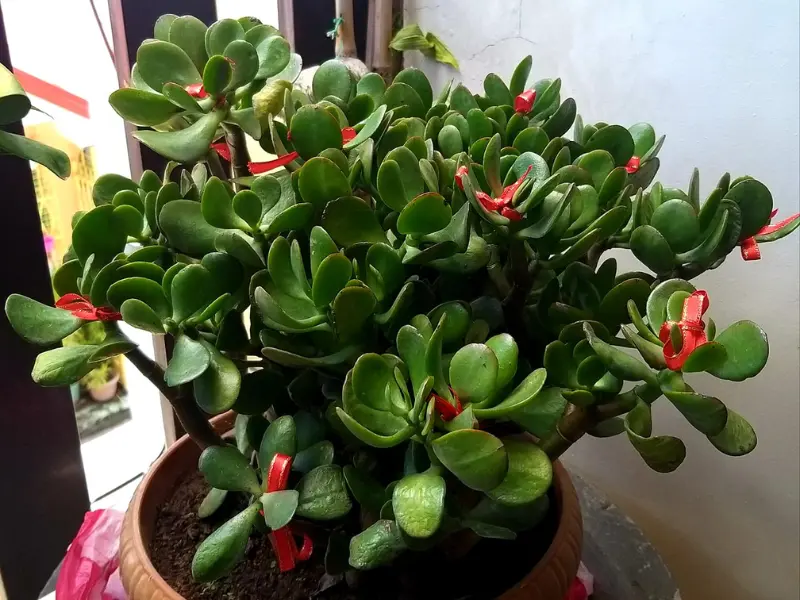
I’ve put together tips and tricks for healthier, happier jade plants that I’ve learned over the years in a single guide for you.
Powdery mildew
Powdery mildew is a fungal disease affecting the jade plant. It produces small white spots on the leaves and other parts of the plant. Powdery mildew affects jade plants mainly in low-light, high-humidity, and low-temperature environments.
The white spots caused by powdery mildew appear as white fluff, with unidentifiable individual spots. Its distinction in appearance from other causes of white spots is that it has fluffy fungi in later stages.
It also occurs rapidly after wiping.
Overwatering
Too much water around the roots will affect the jade plant’s appearance. If the roots can no longer absorb water, the leaves risk suffering from edema. The blister-like spots can have a whitish appearance if the water is salty.
Overhead watering will also leave white spots if you use hard water.
Read my guide on diagnosing and fixing overwatering in jade plants here.
Insect infestation
Insects such as mealybugs, spider mites, and aphids feed on the jade plant leaves and make spots. They also lay eggs on the leaves and crevices that look like white mass. Mealybugs can be found with fluffy balls around them. Mealybugs and whiteflies excrete honeydew that encourages fungal infection.
Fungi
White spots may hint at an underlying fungal infection in your plant. Fungal infections such as leaf rust, blight, and gray mold that attack jade plant leaves are common in jade plants in high humidity or wet conditions.
Some fungal leaf spots that attack jade plants are usually harmless. However, they can worsen if left untreated.
Use of salty water
Using hard water in potted plants leaves residue on the leaves. Some tap water and groundwater have salts such as calcium. Since the jade plant stores the majority of its water in its leaves, the salty content is eliminated by transpiration through the leaves, leaving white spots.
The white spots caused by salty water take time to appear after wiping with a cloth.
Liquid or nitrogen-rich fertilizers are also a high source of salts. Mineral deposits such as calcium carbonates, magnesium sulfates, and phosphates in fertilizers cause white spots in jade plants.
Compost or organic matter also could contain salts which lead to an imbalance of minerals
Self-defense
Sometimes, white spots are a jade plant’s way of defending itself. Succulent plants develop an epicuticular wax to protect them from sun predators and drought. The whitish substance is uneven, appearing on both sides of the leaves.
How to get rid of white spots on jade plant
Unchecked white spots can worsen, making the leaves wilt and collapse. You should therefore act immediately to remedy the problem. With the isolation of the affected plant as the first step, use these methods to get rid of white spots on your jade plant.
Remove the affected leaves
When fungi or powdery mildew attacks the plant, trim the affected leaves and sickly ones to prevent the problem from spreading. Use clean, disinfected shears to cut any leaves with white build-up.
Place the plant in an area with good circulation and low humidity to avoid fungal and powdery mildew infection.
Treat powdery mildew and fungi
Cut the affected parts of the jade plant that have the symptoms. In extreme cases, use a systemic fungicide such as Phyton-27 to treat the remaining surviving plant.
You can also use insecticidal soaps or neem oil to treat powdery mildew on the jade plant. Dilute neem oil solutions to reduce their potency. Apply the solution to the jade plant and nearby plants.
You can also dab 50%-70% isopropyl alcohol solution to remove white spots from mealybugs and aphids on the plants.
Use clean, filtered water
Water management is vital in controlling the white spots. Swap tap water and hard water for filtered water. You can also use water softeners to reduce the hard minerals in your water supply.
Also, avoid overhead watering. Gently pour the water from the base of the plant to avoid wetting the leaves.
Provide proper care
Water the plant sparingly and fix any drainage problems in the soil to prevent overwatering. Also, reduce watering in winter when there is minimal active growing. Ensure you use well-draining soil and a pot with adequate drainage holes.
Use commercial fertilizers sparingly and only when necessary. Prioritize organic fertilizers to prevent salt and mineral build-up.
Keep the growing environment in the right conditions to keep the jade plant healthy and thriving. Prune the plant regularly and repot when the soil becomes compacted.
CONCLUSION
The white stuff on the jade plant appears in different forms caused by various reasons. When the white spots are fuzzy and powdery, they are most likely caused by powdery mildew and fungi. In comparison, salty water causes small white spots that look like pores. These spots can easily be wiped off.


